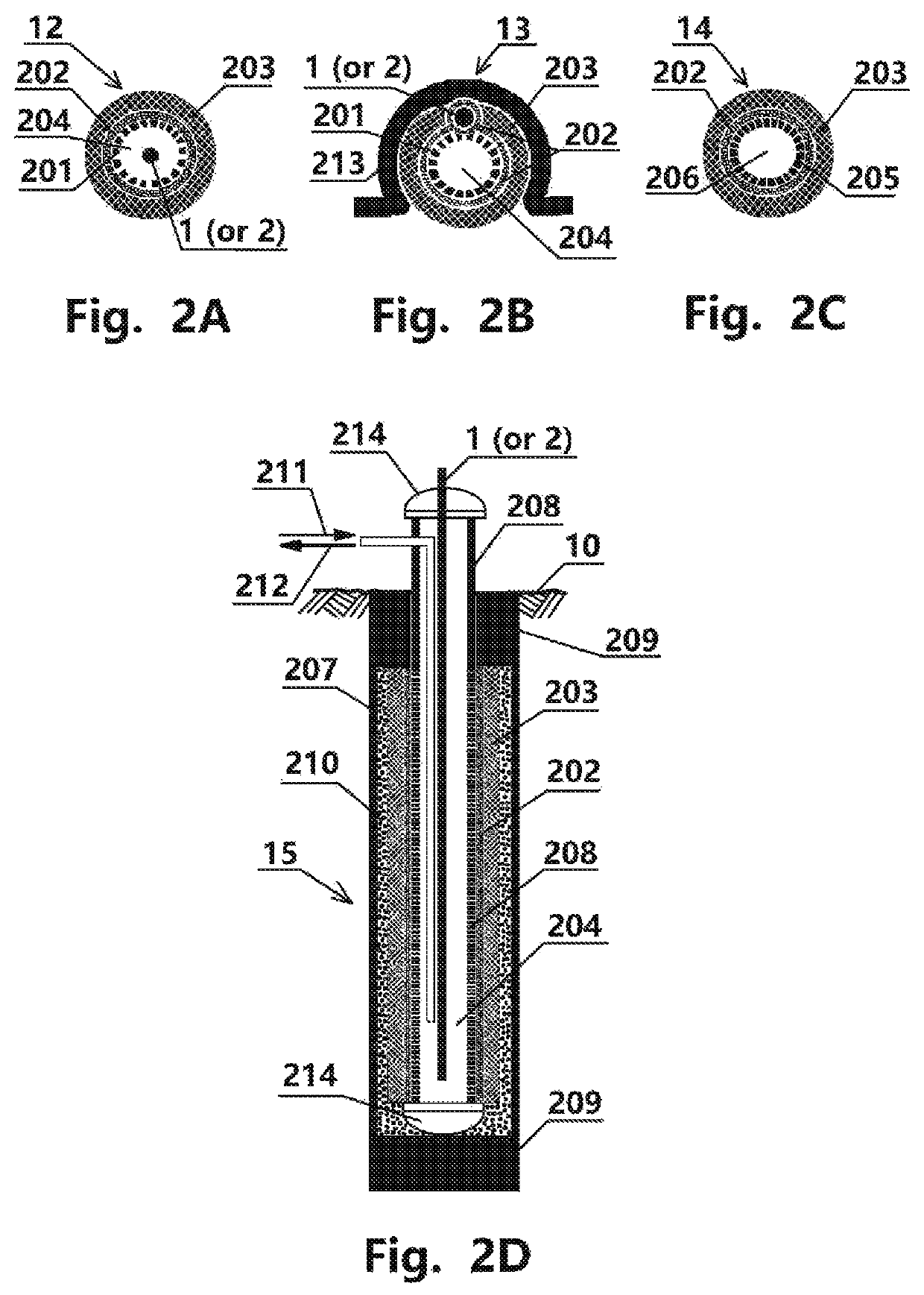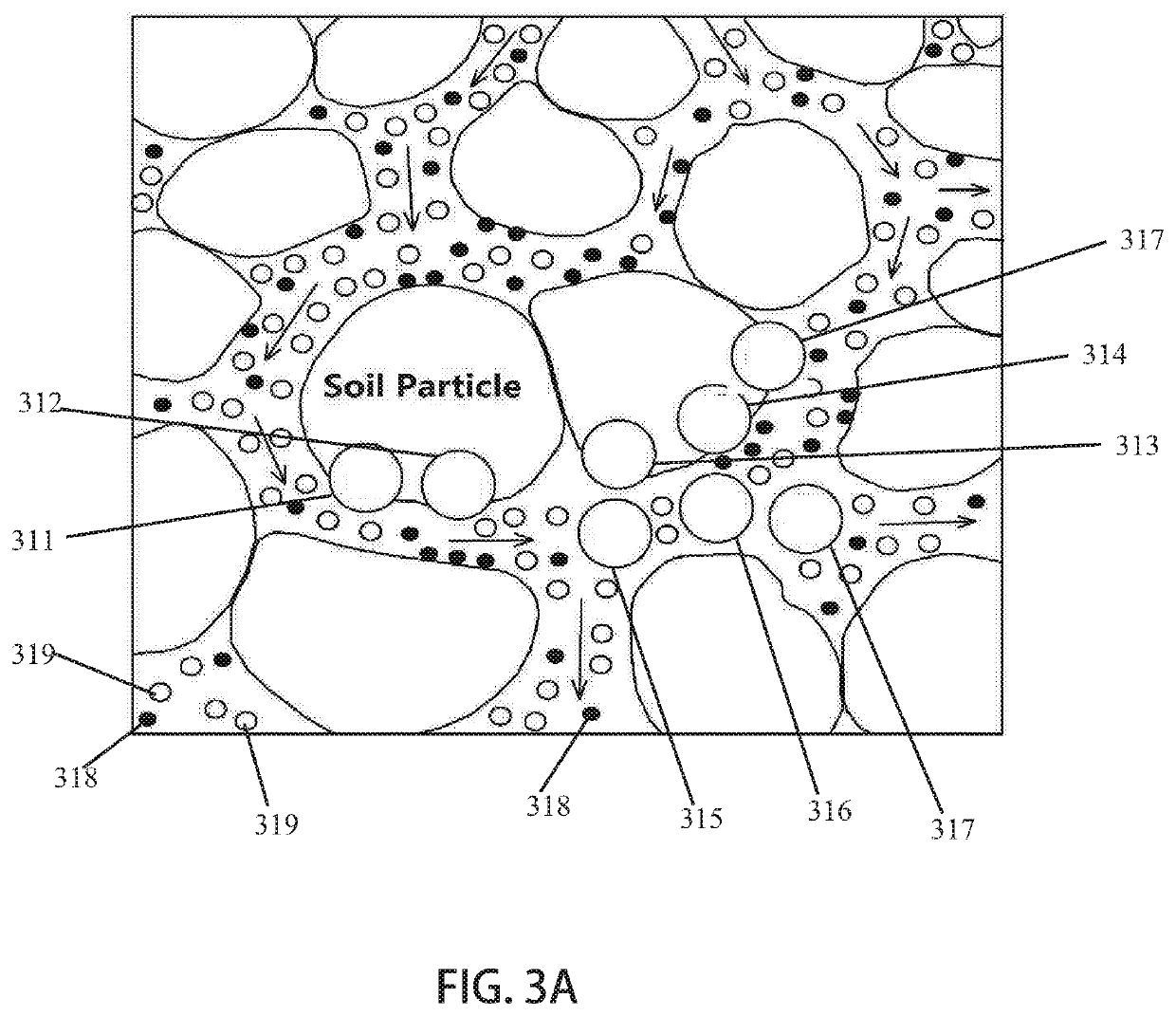Salts, such as chlorides, carbonates, nitrates, and sulfates of
sodium,
potassium,
calcium, and
magnesium, may
impact soils to the extent that render soils unsuitable for agricultural uses.
Salt-affected problems for soils occur in all continents and under almost all climatic conditions.
Causes of agricultural soil salination problem are particularly in the regions where the
irrigation water from river and / or
groundwater containing high salt contents and without proper and good drainage conditions.
The seriousness of the soil salination problems in the agricultural areas are compounded by high
evaporation and low
precipitation especially in the arid and semi-arid regions.
Heavy metals, especially any soluble or insoluble species containing
cadmium,
chromium,
copper, iron, mercury,
manganese,
nickel, lead,
zinc, and radionuclides, may contaminate soils causing various health and environmental problems in all types of land uses.
Dissimilar to that of salt-affected soils, causes of heavy
metal contamination are mainly from improper discharges or spills of materials or wastes containing
heavy metals on or into soils.
However, this reclamation method may create some drawbacks, such as losses of
plant nutrients, lengthy time period requirements, saturation of soil pores required for higher efficiency,
contamination of receiving waters (such as
groundwater) by salts, and losses of valuable
water resources especially in the arid and semi-arid areas where water availability is low and
evaporation rate is high.
For the removal of insoluble salts from soils, however, application of the simple water leaching method as discussed above for the removal of soluble salts is insufficient and ineffective.
The leaching chemical concentrations disclosed by this patent may be too low to be effective.
The anionic nature of the polymers suggested, although can compete with soil CEC to seize cationic salts, the negative nature of leaching compounds may reduce the effectiveness to penetrate the minute pore liquid pathways where clay and soil organic particles also contain negative charges to form repelling forces.
Salts in soils with
field soil moisture contents below saturation, or even below
field capacity, will not have enough chances to contact the leaching solutions.
However, when the relative dry soils are brought to their saturation, gravity may cause the leached fluid polluting soils and
groundwater below the root zone treatment areas.
Current drainage methods practiced are still unable to divert all leaching fluids to the collection drains.
If the relative dry soils are brought to their saturation, gravity may cause the leached fluid polluting soils and groundwater below the root zone treatment areas.
Since the formation constants of these potential compounds with cation salts are unknown, effectiveness of these compounds to be used as complexation agents are unknown.
In most cases, when the relative dry soils are brought to their saturation, gravity may cause the leached fluid polluting soils and groundwater below the root zone treatment areas unless soil
moisture at the bottom boundary of the root zone is less than
field capacity.
Current state of the art methods for drainage of leaching fluids practiced are still unable to divert all leaching fluids to the collection drains to meet the above condition.
The subsurface hydraulic flows are usually very slow, especially for clayey and silty soils.
However, several drawbacks may still exist for this type of electrokinetic method: (1) application of the electrokinetic method still requires moisture contents at or near saturation in soils in order to be effective, as explained previously; (2)
electrode wells are used as the drainage
system for leaching fluid collection, which may not be effective due to distance arranged (usually several meters or higher) and shallow nature of the root zone depths (usually only about 20 cm to 1 m for salt reclamation in
agriculture fields), which will cause collection difficulty on the leaching fluid (that means, majority of the leached solution may flow downward by gravity before reaching the vertical
electrode collection wells); and (3) soil and groundwater contaminations caused by downward migration of flow which contains high concentrations of salts, heavy metals, toxic organics and leaching chemicals below the root zone depth will happen.
However, no information was provided regarding to depths of
electrode planes and spaces of the parallel electrodes in each plane.
It is suggested that pH adjustment to the 8 to 10 range as claimed may not be effective for both salts and heavy
metal leaching.
It is also suggested that spraying of leaching solutions on ground will not enhance the hydraulic flow rate, and may not be able to constantly keeping subsurface soils in saturation condition.
It is suggested that the method may not be technically feasible and economically viable due to such a close arrangement of pluralities of electrodes.
However, for heavy metal remediation of soil impacted sites, comparing to that of
desalination, will be much more complicated and more technologies can be applied.
Selection of the heavy metal remediation method becomes complicated issues of legal, future
land use consideration,
risk assessment, and maybe even a public participation issue, not just a technical issue.
The off-site disposal is considered not environmentally desirable, which has the potential to create another
waste disposal site, and causing impacts from transportation.
Immobilization of heavy metal on-site may affect future
land use, has a potential to cause future soil and
groundwater contamination when subsurface environmental conditions changes, and has potential health impacts for future human contacts such as contacted by children in a future residential developed area.
By evaluating the proposed
system, several drawback may exist for this type of electrokinetic method: (1) no method was provided to maintain the moisture contents in the treated soils at or near saturation in order to avoid formation of
dry soil particles when water in soil pores below moisture saturation and render the purging of metals from the dry particles impossible; (2) electrode wells are used as the drainage
system for leaching fluid collection, which may not be effective due to distance arranged between electrodes which may cause the leached
solution flow downward by gravity before reaching the vertical electrode collection wells; and (3) soil and groundwater contaminations caused by downward migration of the gravitational flow which contains high concentrations of heavy metals, and leaching chemicals below the contaminated zone may happen.
Any of the above situations could cause the failure of the electrokinetic system.
Although numerous modifications and improvements of the electrokinetic method are proposed by many inventors as discussed previously, however, many critical issues and necessary conditions for the success of applying the Electrokinetic methods are not proposed in the past, such as: (1) how to maintain the moisture contents of the remediating soils in or near the saturation condition so all the contaminants can be contacted by the leaching / extraction solution(s) and be removed, (2) how to prevent the leaching and / or leached solutions migrating downward beyond the contaminated zone to avoid polluting the soils and groundwater down below, (3) how to further shorten the remediation time needed beyond the current electrokinetic methods which usually are still requiring months or even years to effectively remediating the impacted soils, (4) how to conserve water yet maintaining sufficient moisture in soils for remediation in the arid or semi-arid areas, and (5) how to simultaneously improve the remediated soil qualities better suited for future land uses, especially when agricultural purposes are concerned.
 Login to View More
Login to View More  Login to View More
Login to View More 


